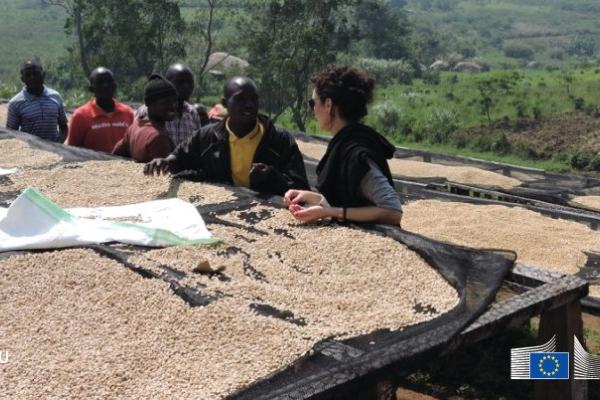- Country or region
- Central America
- Trade topics
- Negotiations and agreements
- Trade policy
The EU and the Central American region concluded a new Association Agreement, signed on 29 June 2012. The Association Agreement relies on three complementary and equally important pillars: namely political dialogue, cooperation and trade, which reinforce each other and their effects. These are the right tools to support economic growth, democracy and political stability in Central America.
Central American countries: Panama, Guatemala, Costa Rica, El Salvador, Honduras, Nicaragua
The trade pillar of the Association Agreement has been provisionally applied since 1 August 2013 with Honduras, Nicaragua and Panama, since 1 October 2013 with Costa Rica and El Salvador, and since 1 December 2013 with Guatemala.
Since then, various implementing measures or amendments to the Association Agreement have been introduced to facilitate its governance.
Trade picture
Eurostat data show that the trade flow between the EU and Central America amounted to €17.9 billion in 2022. The EU's trade balance with Central America presented a trade deficit of €1.1 billion in 2022 (the year before, there was a deficit of €1 billion). Bilateral trade with Central America was particularly affected by the Covid-19 pandemic and its aftermath from 2020-2021.
EU exports to Central America increased by 41% in 2022. This increase was mainly driven by a very good performance in exports of: mineral oil, chemicals, and machinery & equipment, which grew by 284.6%, 46.9% and 27.6% respectively.
In comparison, the main EU imports from Central America by HS section increased by 35%. EU imports are, by order of importance: Vegetable products; Optical and photographic instruments, etc.; Animal or vegetable fats and oils; Foodstuffs, beverages and tobacco; and Machinery and appliances.
The main EU exports to Central America by HS section are, by order of importance: Products of the chemical or allied industries; Machinery and appliances; Mineral products; Foodstuffs, beverages and tobacco; and Transport equipment.
The EU and Central America are exchange annually their respective statistics to produce a joint analysis. Given the importance of the Panamanian Trade Free Zone (the second in the world), Eurostat data tends to overestimate EU exports to Central America.
We recommend consulting the Annual Report of the Commission for detailed analysis.
The EU and Central America
The EU and Central America have maintained close and comprehensive relations for decades, dating back to the EU’s support for the region's successful peace process in the 1980s.
The EU’s central trade policy objectives for Central America are to increase bilateral trade, and to use it to strengthen the process of regional integration between the countries of the region. In practical terms, this means the creation of a customs union, and economic integration, in Central America. The EU has supported this process through its trade agreement and its trade-related technical cooperation programmes.
This new agreement aims at fostering sustainable development and deepening the process of regional integration. Closer economic integration between the countries of the Central American region is important for attracting investment to the region and helping local businesses to develop the strength in their regional market to compete internationally.
The trade part of the Association Agreement replaces unilateral preferential access to the EU market, which was granted to Central America under the EU’s General Scheme of Preferences.
Benefits of the Agreement
- Elimination of most import tariffs;
- improved access to government procurement, services and investment markets;
- better conditions for trade through new disciplines on non-tariff barriers to market access, competition, and intellectual property rights;
- a more predictable environment for trade with a mediation mechanism for non-tariff barriers and a bilateral dispute settlement mechanism;
- strengthening regional integration, for example by setting up a single import duty for the whole region and using a single administrative document for customs, and;
- support for sustainable development, including the consultation of civil society stakeholders.
Committees and Dialogues
The EU and Central America meet regularly to discuss issues and best practices and oversee the proper functioning of the agreement.
Trading with Central America
- Importing into the EU from Central America
- EU trade defence measures on imports from Central America
- Exporting from the EU to Central America
- Trade relations are part of the EU's overall political and economic relations with Costa Rica, El Salvador, Guatemala, Honduras, Nicaragua and Panama
- Central America is one of the most integrated regions of the world, progressing towards a customs union and with elaborated potential integration mechanisms.
Exporters' stories

As a result of the EU's trade deals, Belgian coffee maker OR was able to build partnerships with farmers in countries such as Costa Rica. These partnerships entail the farmers taking on an active role in the coffee-making process rather than just supplying beans.
